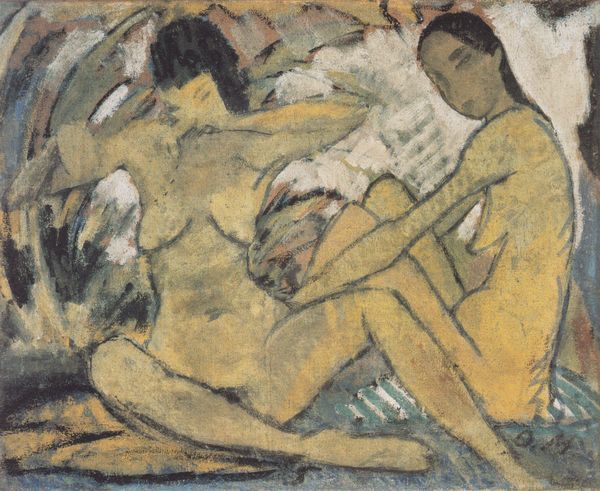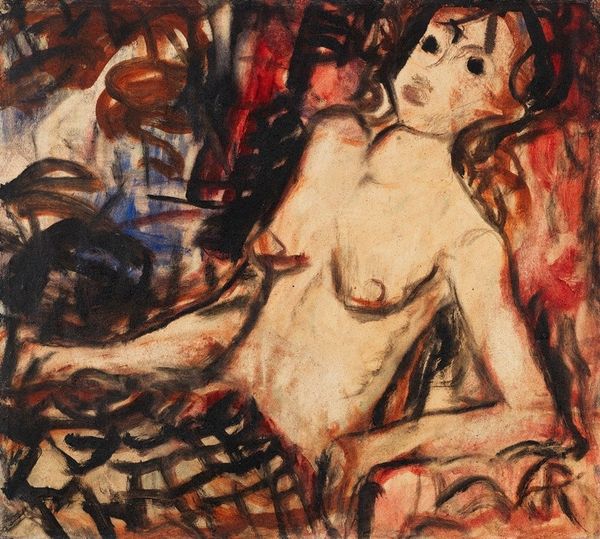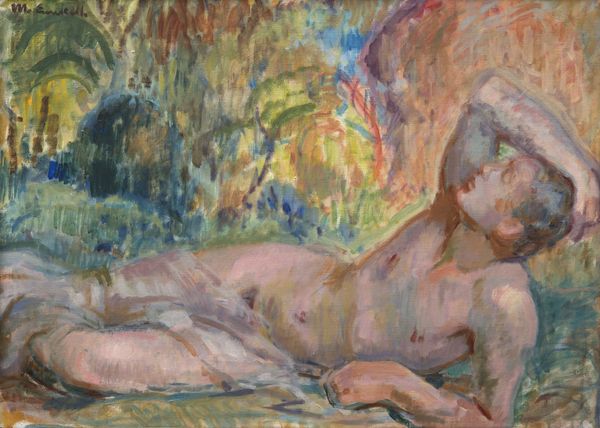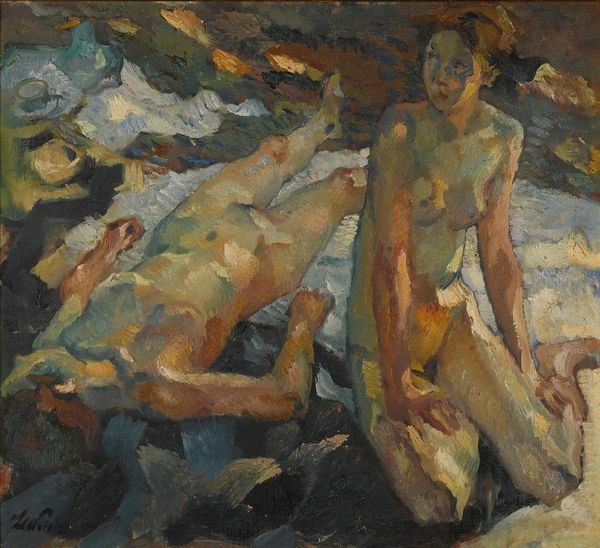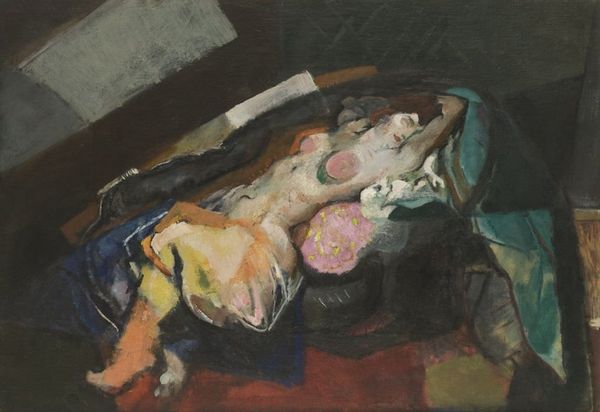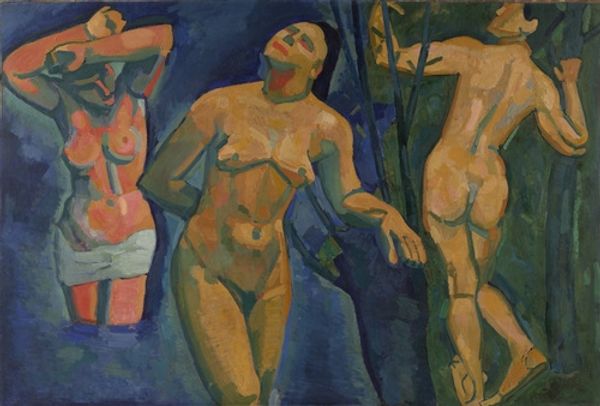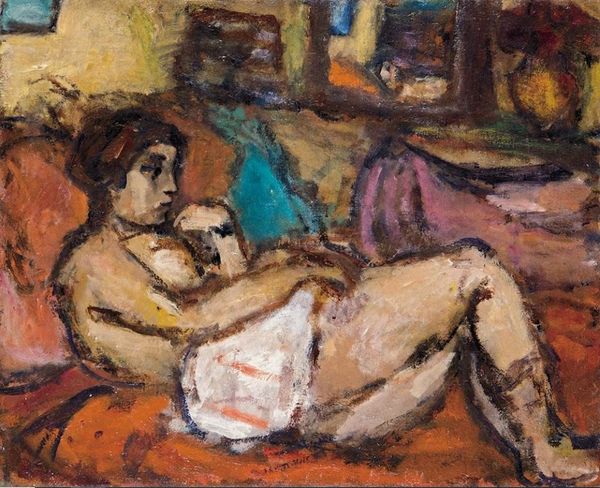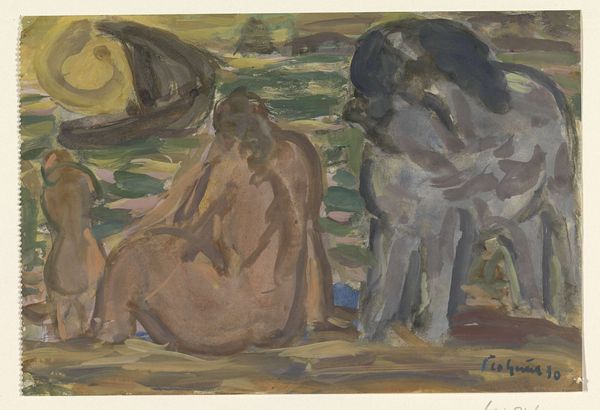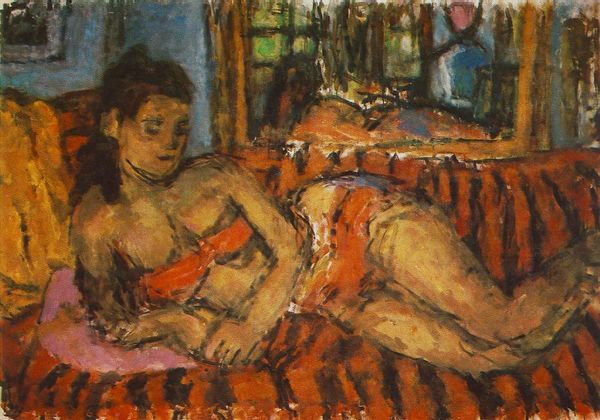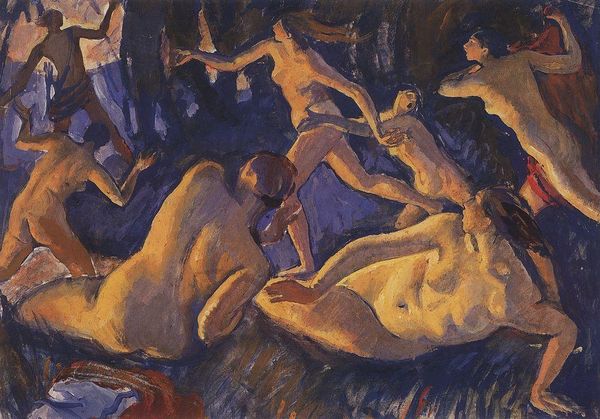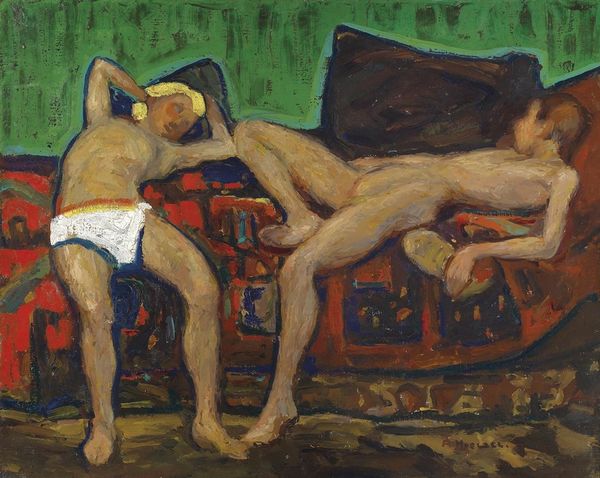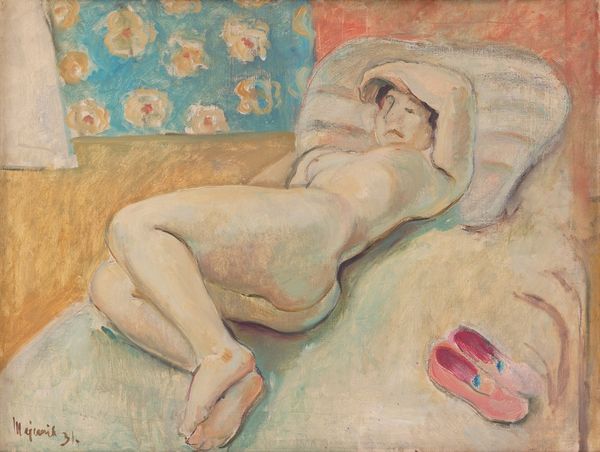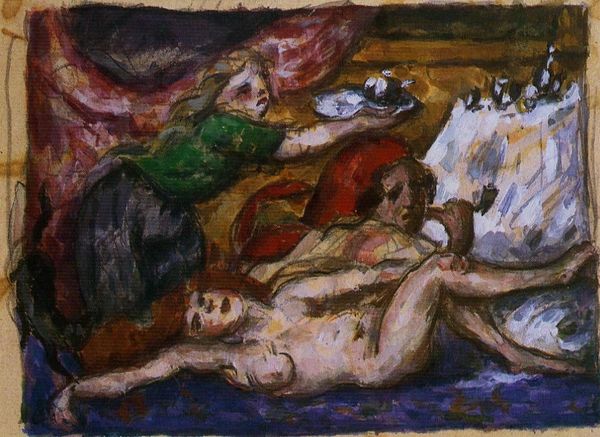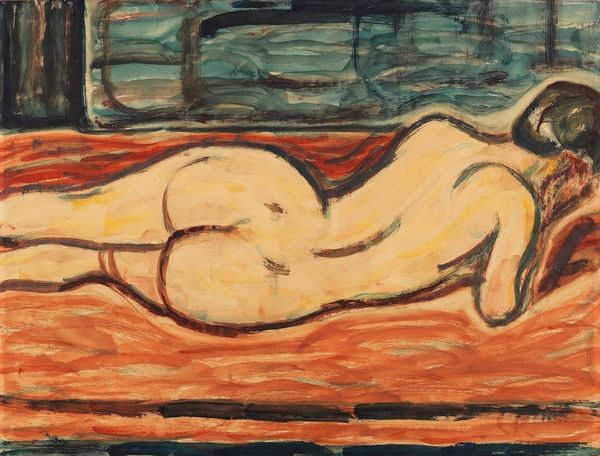
painting, oil-paint
#
portrait
#
painting
#
oil-paint
#
figuration
#
oil painting
#
romanticism
#
nude
Copyright: Pinchus Kremegne,Fair Use
Editor: Here we have Pinchus Kremegne's oil painting, "Reclining Nude." Its exact date is unknown. I'm immediately struck by the somber mood, despite the traditionally sensual subject matter. The brushstrokes are so thick and the colors so muted. What do you see in this piece that gives it this distinctive quality? Curator: It's fascinating how Kremegne complicates the tradition of the nude. Usually, we see a glorification, an idealization of the female form. But here, there's a sense of realness, perhaps even vulnerability. What's interesting to consider is the social context in which this work may have been produced. Could it be a critique of the male gaze, a questioning of the established norms within art history? Editor: That's a great point. I was thinking about how the institutional role of art has shifted, allowing for more diverse and challenging representations like this one. Did the emerging gallery scene in the early 20th century allow Kremegne and artists like him to experiment more freely with the nude? Curator: Absolutely. The rise of independent galleries and artist collectives played a vital role. They provided platforms for artists who didn't necessarily align with the conservative tastes of the established salons. These spaces fostered dialogue, challenged traditional hierarchies, and enabled a more democratic approach to art making and consumption. How might that context have influenced how the public received an image like this one? Editor: It probably sparked a lot of conversation! Maybe even challenged some societal views about the female form. Thanks for broadening my perspective. Curator: Indeed! Reflecting on the painting through its socio-historical lens really enhances its relevance, even today.
Comments
No comments
Be the first to comment and join the conversation on the ultimate creative platform.
